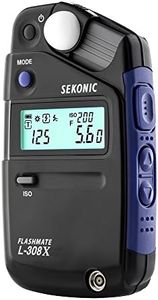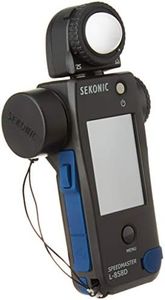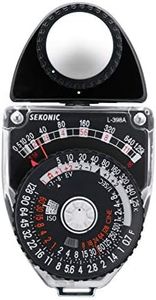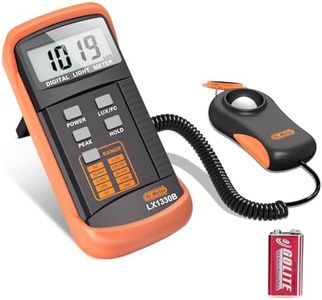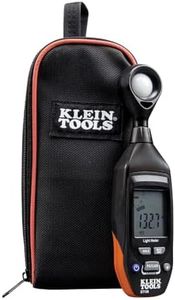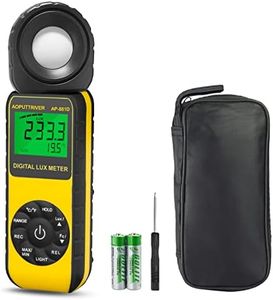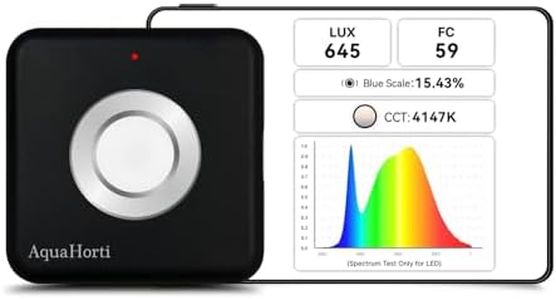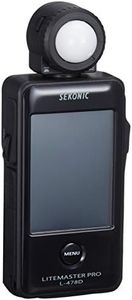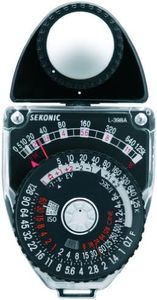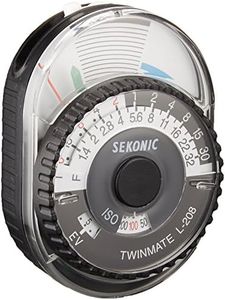We Use CookiesWe use cookies to enhance the security, performance,
functionality and for analytical and promotional activities. By continuing to browse this site you
are agreeing to our privacy policy
10 Best Light Meters
From leading brands and best sellers available on the web.By clicking on a link to a third party's website, log data is shared with that third party.
Buying Guide for the Best Light Meters
Choosing a light meter is an important decision for anyone involved in photography, cinematography, or even horticulture. A light meter measures the amount of light in a scene or space, helping you get the right exposure or lighting balance. To find the best fit, think carefully about how and where you’ll use it—for example, do you need it mainly indoors, outdoors, for studio work, or a mix? Also, consider how much control or data you want from your measurements. Below are the key specs you should pay attention to, along with advice on how to assess each according to your personal needs.Type of Light MeterThere are two main types: incident light meters, which measure the light falling onto a subject, and reflected light meters, which measure the light bouncing off a subject. Some models offer both. Incident meters are great for consistent lighting situations and accurate exposure, while reflected meters are useful for quickly gauging specific areas or scenes. If you mostly photograph people or controlled environments, incident might serve you better. If you shoot outdoors or need to measure very specific parts of a scene, reflected can be handy. Consider what and how you shoot to decide which type suits your workflow best.
Measuring Range (Lux or Footcandles)This specification tells you the minimum and maximum level of brightness the meter can measure, usually marked in lux or footcandles. Lower minimums are helpful for very dim conditions like night or low-lit interiors, while higher maximums matter if you’re working in bright sunlight or with strong artificial lights. If you often shoot in a wide variety of lighting—from dark rooms to bright outdoor spaces—look for a meter with a broad measuring range. For more consistent scenes, you might get by with a narrower range that focuses on your usual lighting conditions.
Display and InterfaceThe display shows your readings and sometimes extra info, like exposure suggestions. Some meters use simple analog needle dials, while others have digital screens with more data or even touch functions. A larger, backlit display helps in low-light environments. Choose a display you can read easily and an interface that feels intuitive, especially if you need to read results quickly or in varying conditions. If you have trouble with small screens or complex menus, prioritize meter models with simple, legible layouts.
Measurement ModesLight meters can come with additional measurement modes, such as continuous, flash, or ambient. Continuous is for regular light, flash mode is important for studio or flash photography, and some meters offer averages or multi-spot readings. Decide what features align with the type of work you do: if you use flash often, ensure the meter supports flash sync; if you want to assess multiple points or average an area, look for a meter that offers these capabilities.
Portability and Build QualityConsider the size and construction of the light meter. Smaller, lighter meters are easy to carry around and fit in your pocket, making them ideal for on-the-go use. Larger, more robust meters may offer more features or sturdier builds, better suited for studio environments or heavy use. If you work outdoors or move frequently between locations, lighter and more durable options might suit you best. For stationary work, comfort and extra features may take priority over compactness.
Power SourceLight meters can run on standard batteries, rechargeable power, or even solar energy. Think about where you’ll use your meter most—if you’re often out for long days, consider something with long battery life or easily replaceable batteries. In a studio, you may prefer a rechargeable device. The reliability and convenience of the power source can make a big difference depending on your working style.

